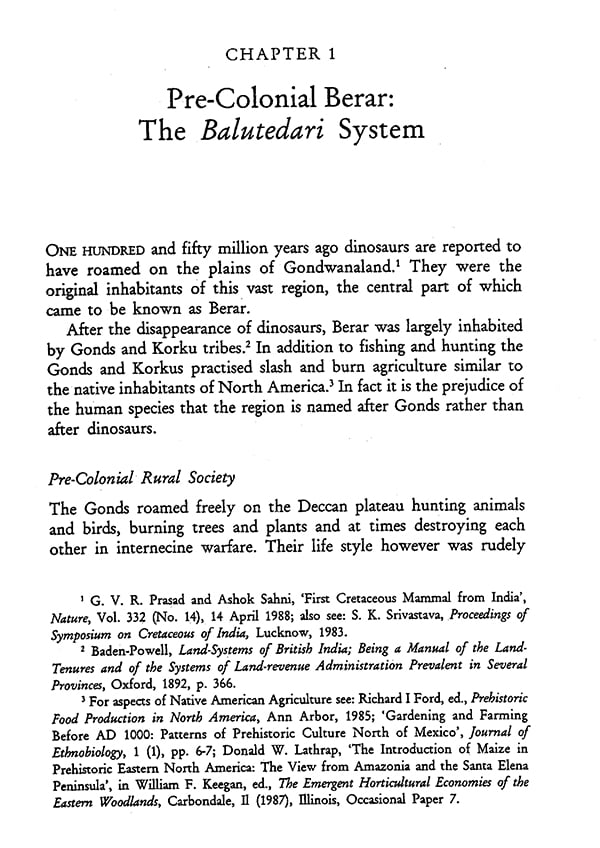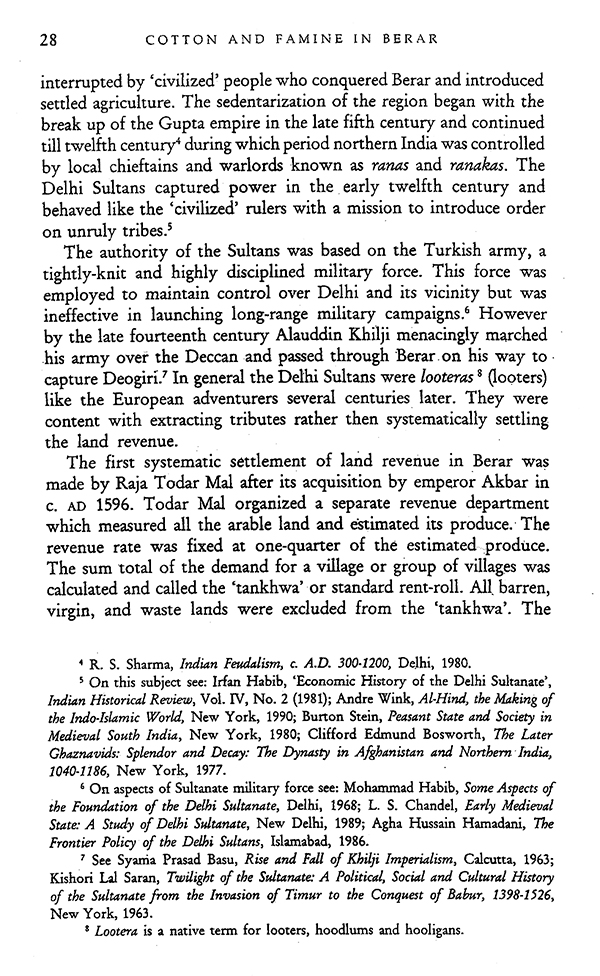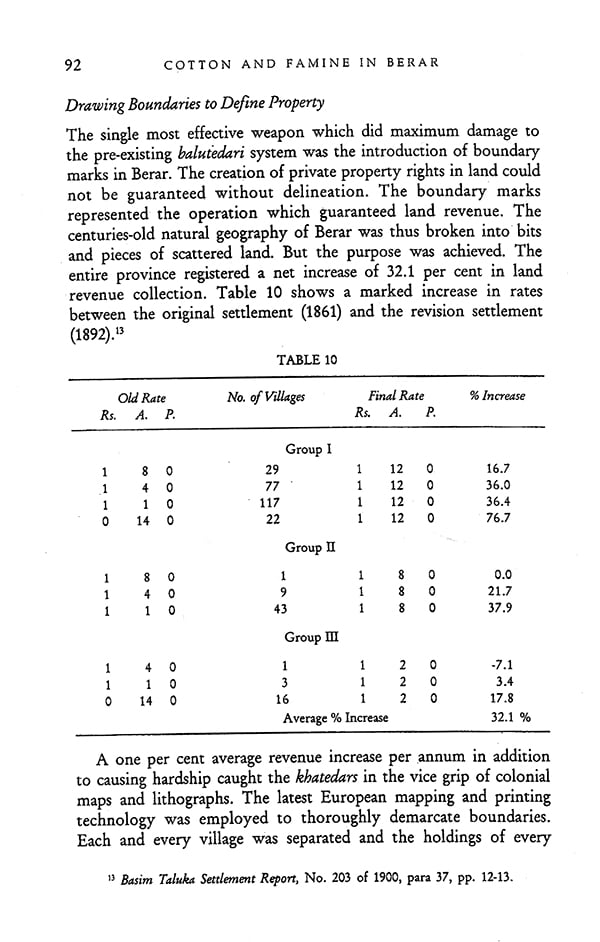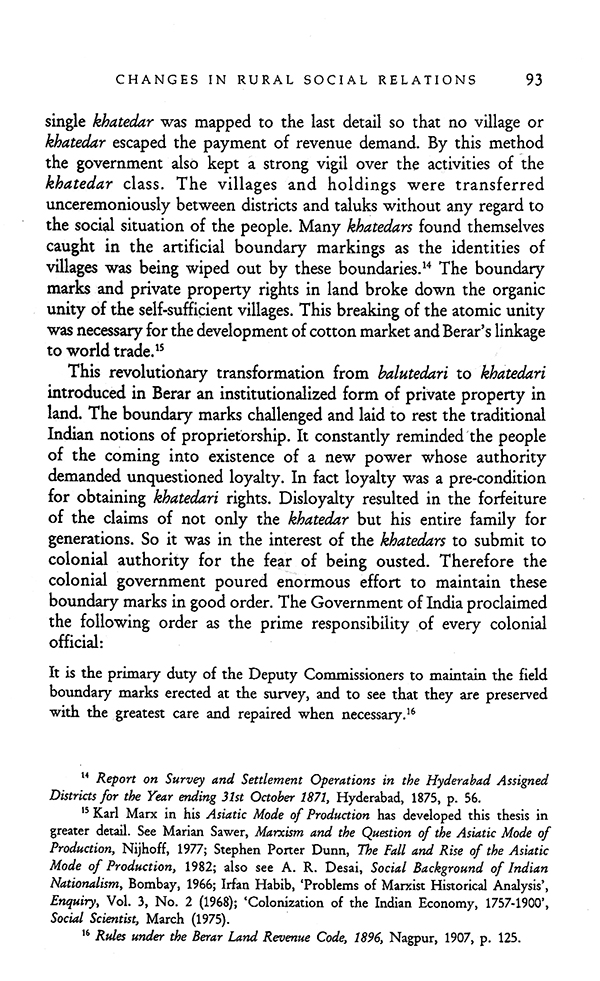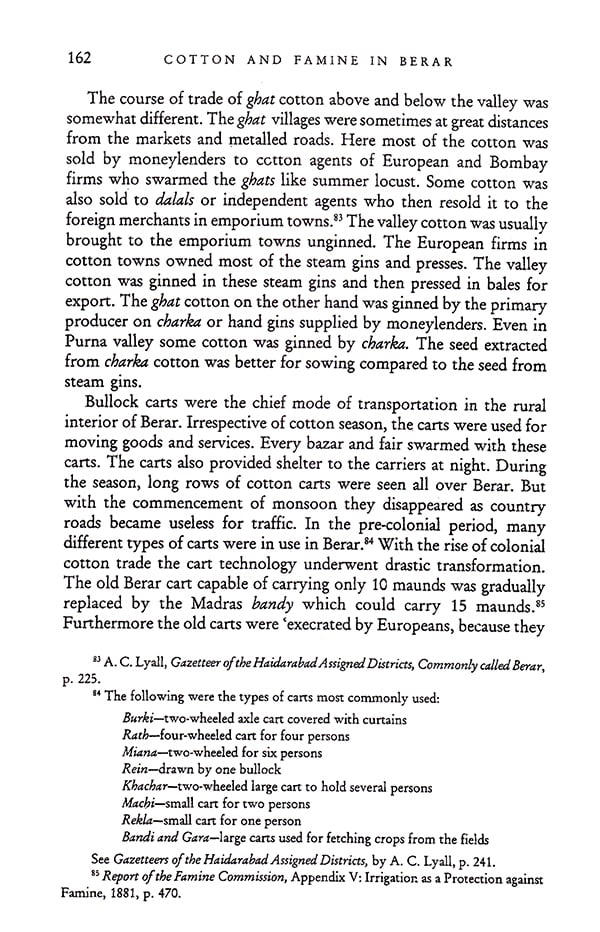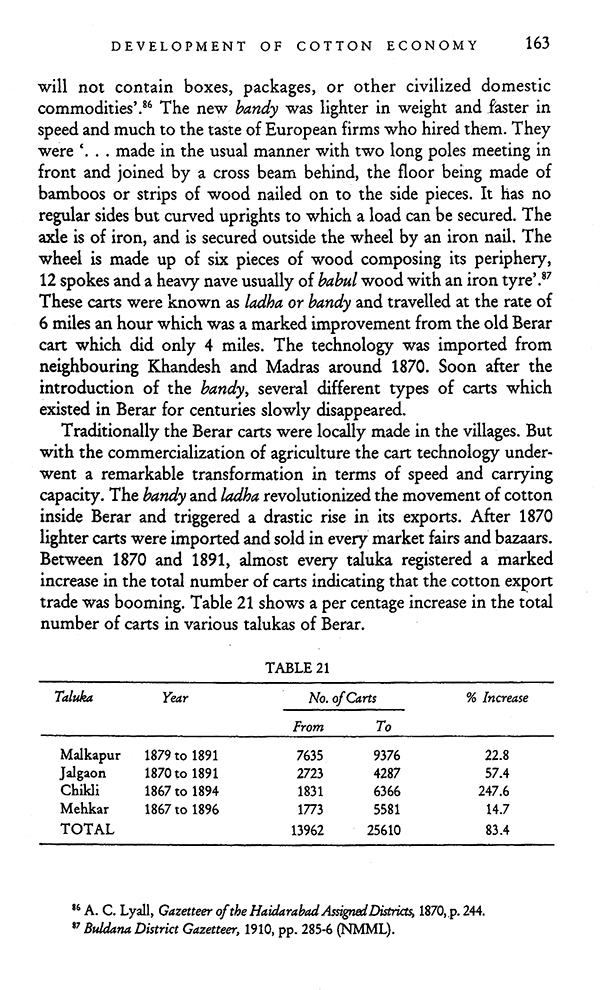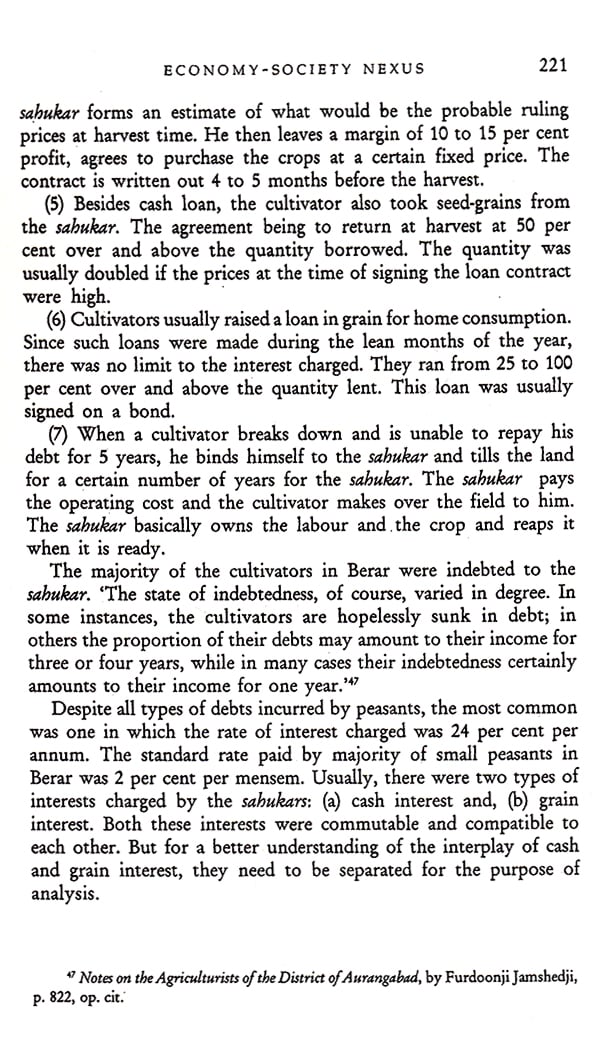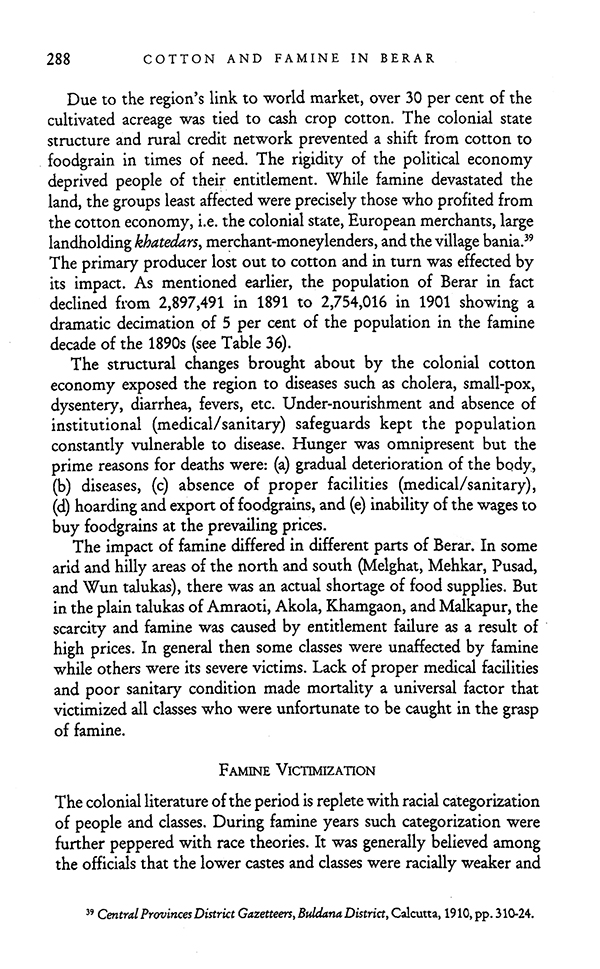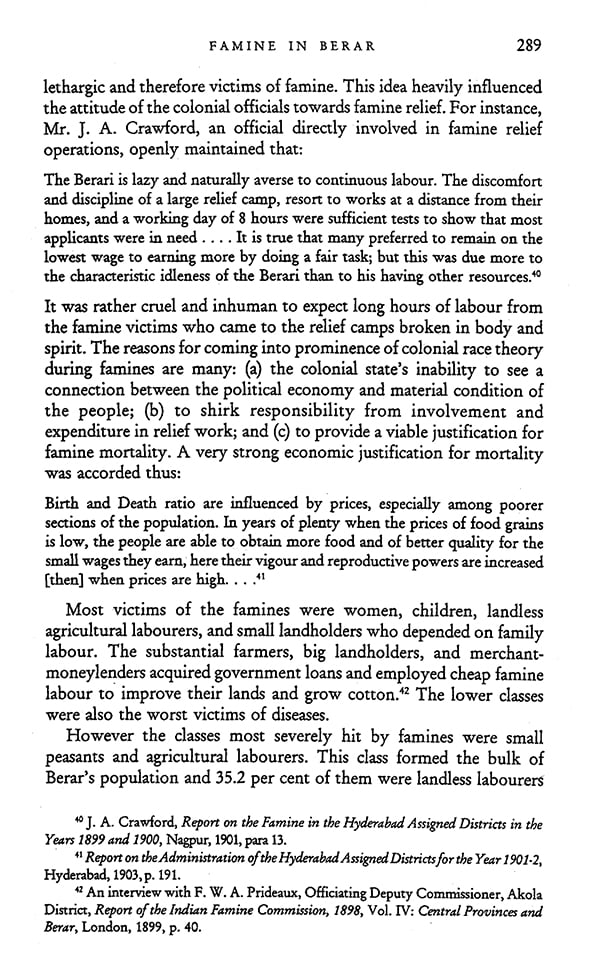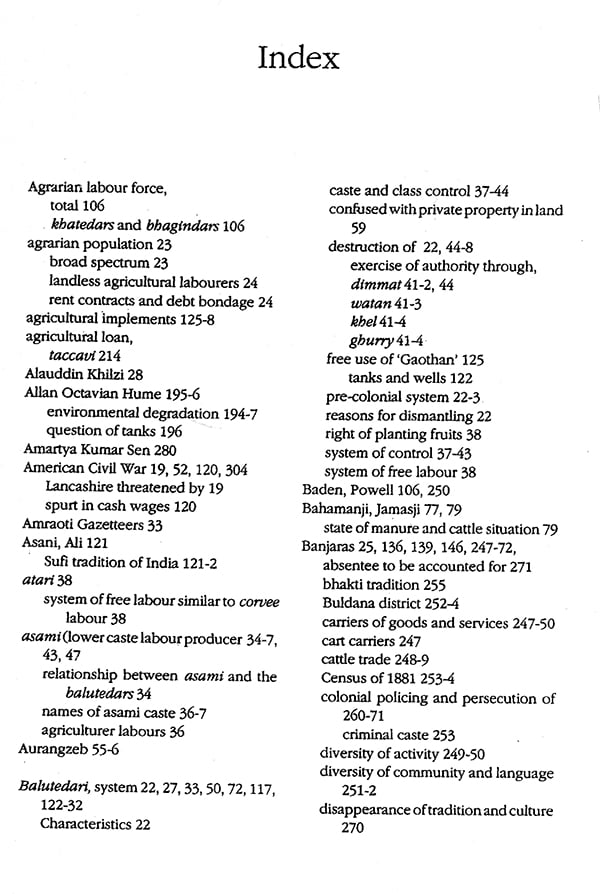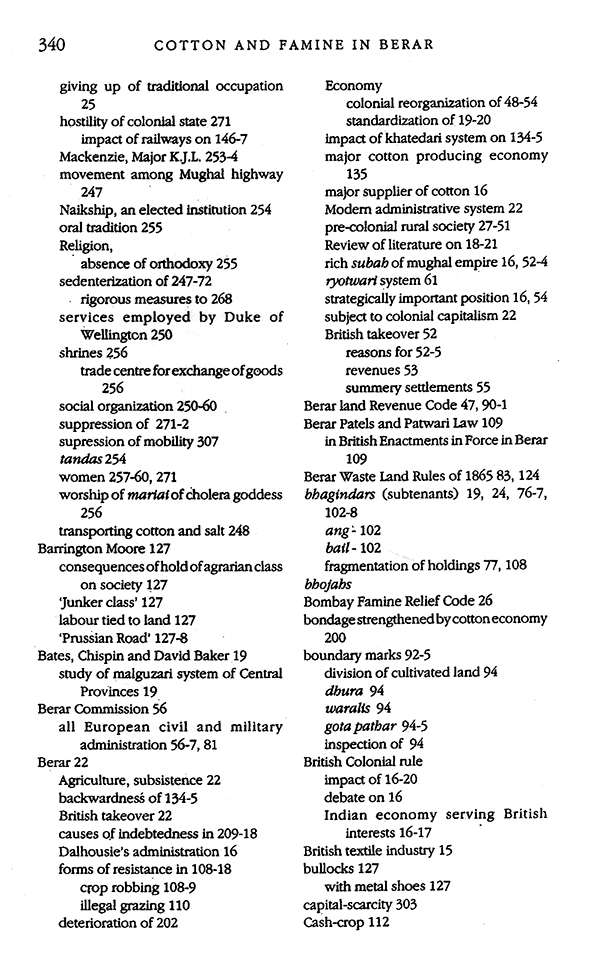
Cotton and Famine in Berar (1850-1900)
Book Specification
| Item Code: | NAZ144 |
| Author: | Laxman D. Satya |
| Publisher: | Manohar Publishers and Distributors |
| Language: | English |
| Edition: | 1997 |
| ISBN: | 9788173041600 |
| Pages: | 348 |
| Cover: | HARDCOVER |
| Other Details | 8.80 X 6.00 inch |
| Weight | 500 gm |
Book Description
The special status of Berar as a prime cotton producing region within the British colonial empire in the nineteenth century in itself reveals its importance to the contemporary world economy. The dramatic takeover of the region and its linkup to the world market with the consequent socio-economic change the region underwent is a story which has waited long to be told. This work retrieves Berar from the colonial documents of the nineteenth century and critically places it in the historiography of South Asia.
The book examines the forceful impact of the industrial revolution on the material condition of the masses and how it changed social relations in the Berar society as a whole. It also studies the activities of the colonial state in Berar in the context of a world economy driven by the cotton crisis before and after the American Civil War. The great social and economic transformation which this region underwent is systematically analysed in relation to the broader framework of colonialism and imperialism. The study also addresses the critical issue of the deep and underlying connection between cotton, British imperialism and famine in Berar.
This book should be of great interest to students of agrarian, environ-mental, economic and social history, political economy, colonialism, imperialism and popular culture.
Laxman D. Satya is Professor of History at Lock Haven University in Pennsylvania. He is the author of Ecology, Colonialism, and Cattle: Central India in the Nineteenth Century (2004) and Medicine, Disease and Ecology in Colonial India (2010).
IT IS WITH MUCH pleasure that I write these few words of introduction and appreciation of Dr. Laxman Dass Satya's study of cotton and famine in Berar in the latter half of the nineteenth century. This book is an important and original contribution to the social and economic history of modern India. Dr. Satya has gleaned a fascinating set of materials from archives in London, New Delhi and Central India. His work focuses on an important cotton-growing region of Central India which has been curiously neglected by agrarian historians. Soon after being annexed by the British, Berar experienced a cotton boom during the American Civil War. Dr. Satya explores and explains Berar's shift to commodity production for a capitalist world market and the absence of any significant developmental impact of agricultural commercialization under conditions of colonial capitalism.
In a very substantial chapter on the land revenue settlement between 1861 and 1877 Dr. Satya skilfully unravels the ways in which the colonial state sought to settle and sedenterize Indian rural society. While most agrarian historians have used cadastral survey and settlement reports to collect information on landholding and agrarian social structure, Dr. Satya is able to show how modern technology used in the settlement operations was deployed to achieve the aim of standarcli7ing local social and cultural practices. He probes the balance between forests and agricultural plains to make important points about the reduction of rural mobility and its environmental consequences.
IN THE NINETEENTH century cotton was in great demand in the world market as a cash crop. The need for raw cotton during the industrial revolution motivated Great Britain to colonize the rich cotton growing lands in Egypt and India, besides engaging in trade with the slave plantations of the American south. From the beginning of the nineteenth century, cotton was thus associated with colonialism and slavery. This connection played a major role in shaping and reshaping the economy and society of the areas engaged in cotton production throughout the world. Karl Marx in the mid-nineteenth century noted this process happening on a global scale:
The discovery of America, the rounding of the Cape, opened up fresh ground for the rising bourgeoisie. The East-Indian and Chinese markets, the colonization of America, trade with the colonies, the increase in the means of exchange and in commodities generally, gave to commerce, to navigation, to industry, an impulse never before known. . . .
Subjection of nature's forces to man, machinery, application of chemistry to industry and agriculture, steam-navigation, railways, electric telegraphs, clearing of whole continents for cultivation, canalization of rivers, whole populations conjured out of the ground-what earlier century had even a presentiment that such productive forces slumbered in the lap of social labor?'
**Contents and Sample Pages**